Listen, Hollywood! (8)
By:
August 27, 2019
One in a series of 10 posts suggesting novels (from Josh Glenn’s BEST ADVENTURES series) that really ought to be adapted for the big screen.
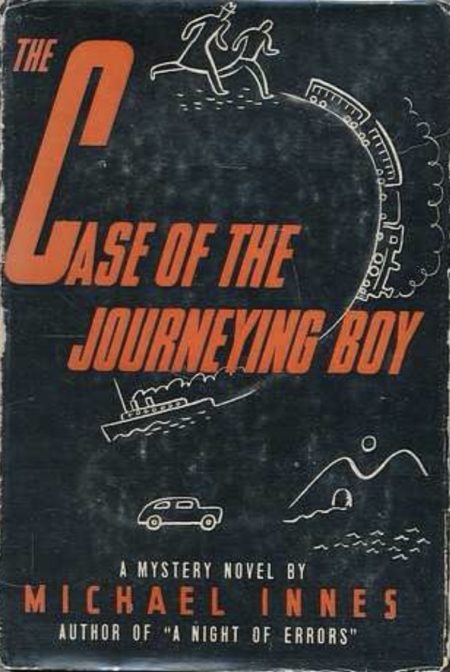
Michael Innes’s espionage/hunted-man adventure The Journeying Boy (also published as The Case of The Journeying Boy) appears on my list of the Best Adventures of 1949.
Elevator pitch:
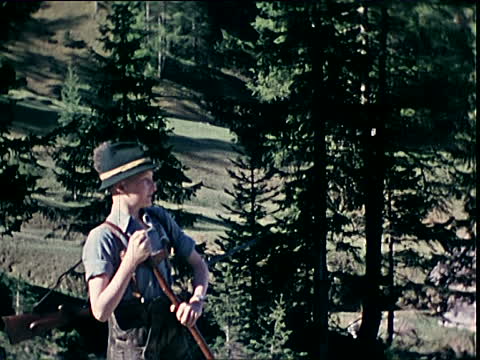
It’s 1947: WWII has ended; the Cold War is heating up. Humphrey Paxton, the son of England’s foremost atomic boffin, is headed to rural Ireland for a vacation; Mr. Thewless, a mild-mannered tutor, is hired to accompany him. Humphrey appears to have read one too many Boy’s Own adventures — criminal gangs, secret caves, imposture, that sort of thing… he’s quite paranoid and jumpy. However, during the course of their journey, Thewless begins to believe that there truly is something sinister afoot. (Is Humphrey an imposter? Or seriously deluded?) Meanwhile, a Scotland Yard detective’s investigation of a London murder puts him on Humphrey’s trail; and a mysterious older woman, Miss Liberty, involves herself in the action. Thewless’s adventures are thrilling yet slightly comical; however, when push comes to shove, he will rise to the occasion!
Several of the main characters — Mr. Thewless, Miss Liberty, Cyril Bolderwood, Inspector Cadover — are 65+ years of age. So this is a terrific vehicle for British actors of a certain vintage. Also: Wes Anderson, please check out the settings and atmosphere.
First act:

Our story begins at the swanky West End residence of Sir Bernard Paxton, the greatest living physicist and the man driving England’s atomic weapons program. He is brilliant but absent-minded; “He looked at Mr. Thewless in an abstraction so extreme as to suggest that some profound speculation on the structure of the physical universe had suddenly come to him from the void.” Also, he is a widower struggling to raise a spirited son whom he doesn’t understand. We won’t meet (the real) Humphrey until the very end of the movie’s first act; but signs of him are everywhere. Humphrey is as lowbrow as his father is highbrow: evidence of his fascination with adventure novels, violent pulp fiction, sexy starlets, and the like abound. Also, the remnants of things he’s destroyed are everywhere. Vague and befuddled about life’s mundane details, Sir Bernard is looking forward to sending his son to Ireland for the summer so he can get some peace.
Sir Bernard interviews two men for the position of Humphrey’s summer tutor. Perhaps this scenario could be presented in montage. Here viewers will be introduced to Mr. Thewless, a no-nonsense, pedantic, older man; and to the dashing Captain Cox, who has seen action in exotic locales… and isn’t at all intellectual. We will also learn about Humphrey, from Sir Bernard, who admits that the boy is “sensitive and slightly nervous” (he is, in fact, paranoid and jumpy), that he is “not very amenable to discipline” (which is why he has fallen behind in school), and that he is “uncommonly precocious… in — um — the sphere of the emotional life” (he is very interested in girls). Thewless is the superior tutor… yet Sir Bernard is attracted to Cox’s vim and vigor, and hires him. He and Humphrey will meet at King’s Cross Station on Thursday, and leave for Ireland.
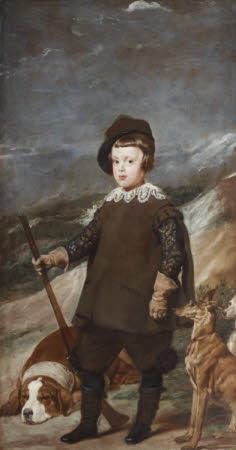
Five important bits of foreshadowing, from the scenes in Sir Bernard’s home. (1) His butler is a rather thuggish sort, who doesn’t really seem like butler material; in fact, he is a recent hire — and an actual thug. (2) There’s a 17th-century painting of a black-haired boy holding a musket in Sir Bernard’s study. (3) We will become aware that Sir Bernard has only just met Ivor Bolderwood, supposedly a distant cousin of his deceased wife’s — who has invited Humphrey to stay at Killyboffin, his remote Irish estate. (4) Captain Cox jots a few notes in his pocket diary; these will prove important clues, for the Scotland Yard inspector investigating his murder. One of the notes concerns his plan — approved by Sir Bernard — to purchase Humphrey a shotgun. (5) When Sir Bernard mentions the name “Bolderwood,” Cox says, “Ah. They wouldn’t be the Bolderwoods I know.” Sir Bernard takes this for a lame attempt at humor; it turns out to be important.
A block away from the Paxton residence, a young teenage boy catches up to Cox and introduces himself as Humphrey; he is wearing an idiosyncratic, memorable school uniform of some sort. (In Innes’s book, the uniform involves a kind of out-of-fashion bowler hat.) Cox and Humphrey make plans to buy the shotgun together on Thursday, then watch a movie — Plutonium Blonde, an espionage thriller that involves sex, violence, and a huge explosion at the end — then head to King’s Cross, for Ireland. Humphrey is the one who suggests this plan; Cox is agreeable.
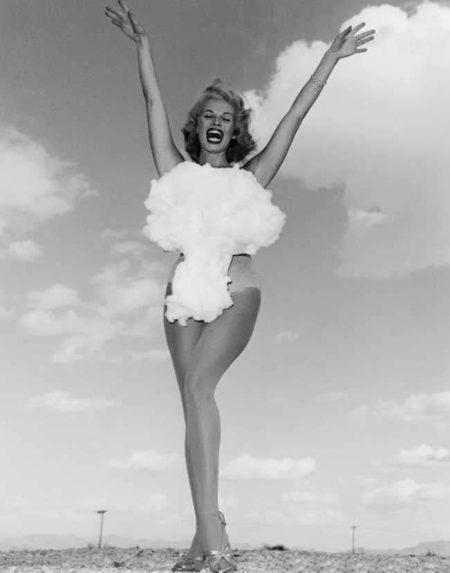
[In the book, there now occurs an epistolary chapter in which we learn various things: Sir Bernard lets Thewless know, by telegram, that he won’t require his services as a tutor; Humphrey orders a pile of books, from a bookseller, for his summer vacation — mostly Biggles adventures, but also a number of “sexy” books, including DH Lawrence; Humphrey invites a shopgirl girlfriend of his to see Plutonium Blonde; Cox telegrams Sir Bernard to say that he cannot accept the tutor post, due to “sudden death”; Paxton hires Thewless, and arranges for him to meet Humphrey at King’s Cross; Humphrey writes a stern note to a blackmailer who has taken photos of him in the park with his shopgirl girlfriend; a Miss Liberty writes to a friend, to tell her that her brother, a Sir Charles, whose work is highly confidential, has asked her to travel to Ireland; Cox writes to a girlfriend to let her know he’s off to Ireland (which is odd, since he’d earlier canceled his trip, or so we thought); and Ivor Bolderwood writes to his father, at Killyboffin, to let him know that Humphrey and Thewless are headed to Ireland together. The blackmail business seems like one wrinkle too many; I think we might want to lose it.]
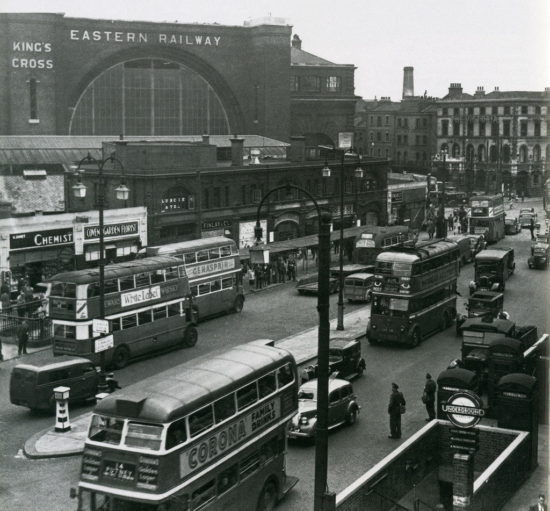
Cut to King’s Cross railway station, on Thursday. Thewless is at King’s Cross, organizing Humphrey’s luggage, which has been sent ahead; one of the packages is a shotgun. A taxi pulls up, and out leaps a young teenage boy in the same idiosyncratic school uniform we’ve already seen — but it’s a different boy! This one is black-haired, not blond. He introduces himself as Humphrey.
What’s going on? Which boy is the real Humphrey?
Second act:
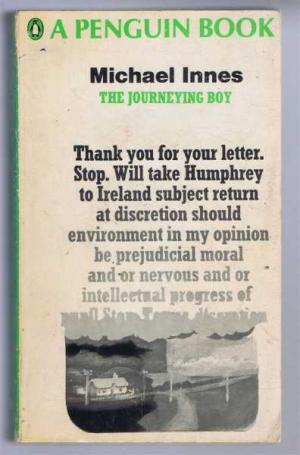
The movie now becomes a Hitchcock-esque train adventure — complete with a Dame May Whitty type. Thewless and Humphrey share a compartment with an older woman, Miss Liberty; and with a sinister bearded man wearing “pebbly glasses” — that is, spectacles with thick round lenses. Humphrey is jumpy and paranoid; he asks for proof that Thewless is who he claims he is. Thewless manages to reassure him — by quoting Latin, and so forth. [When Humphrey confides that he’s a victim of blackmail, Thewless pooh-poohs him for being over-imaginative. Not sure we’d need to keep the blackmail business.] He is annoyed, therefore, when Miss Liberty encourages Humphrey’s morbid imagination by engaging him in a discussion about the spy novel he’s reading — she’s also an aficionado of that sort of literature, particularly when the action happens on a train!
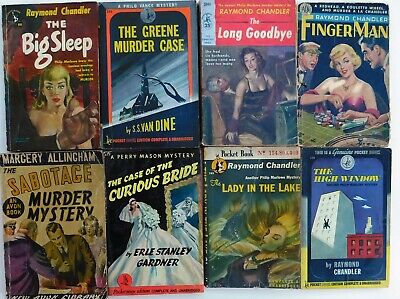
In London, Detective-Inspector Cadover is investigating a murder. He’s white-haired, a veteran detective — one gets the sense that this may be his last case, so he’s taking it very seriously.
A man was shot, in a movie theater, during a screening of Plutonium Blonde — at the exact moment of the movie’s climactic explosion. [Innes devotes a great deal of space to making fun of the movie theater’s pretensions to high culture; not sure that sort of thing needs to be included.] Not only was he killed, but someone has snipped away identifying tags from his clothing. We recognize the body as Captain Cox’s; the only clue to his identity is his pocket diary, entries in which suggest that the man was planning a trip to Ireland, along with cryptic notes such as “gun for boy,” “Bolderwood,” and so forth. Witnesses recall that the man had entered the theater with a young teenage boy wearing an idiosyncratic school uniform — and that a woman sat next to him.
[In the book, it turns out that Humphrey and his girlfriend had been in the theater, coincidentally; and that Humphrey had heard the man address the boy as Humphrey, and discuss a trip to Ireland, which freaked Humphrey out, so he left — before the killing. This seems like too much coincidence, for the movie. But it would help explain why Humphrey is so paranoid. Back on the train, Mr. Thewless becomes almost convinced that Humphrey isn’t the real Humphrey; Innes claims that Humphrey’s own paranoia infects Thewless. Thewless is only reassured once he sees Humphrey holding the shotgun, and realizes how similar he looks to the boy in the painting in Sir Bernard’s study. I’m not sure we need to go there.]
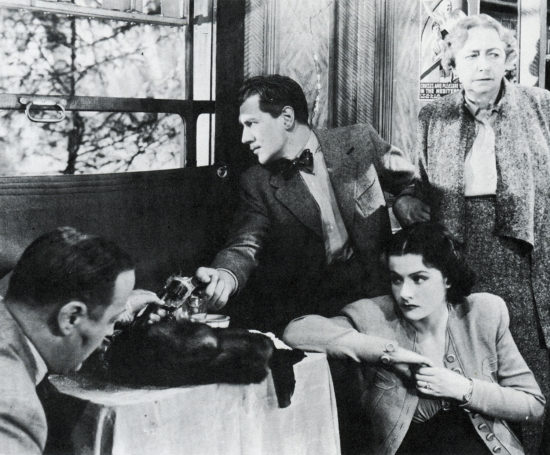
The train context is a metafictional one. Innes is conjuring up The Flying Scotsman, Shanghai Express, The Lady Vanishes, Night Train to Munich, and other great prewar train-thrillers; it’s very knowing — the no-nonsense Thewless is all too aware of the absurdity of imagining that anything shady will actually happen on a train journey. At the same time, Miss Liberty enjoys talking about espionage thrillers set on trains: “It is not primarily a matter of mystery, and not primarily a matter of violent action,” she says of the technique of such yarns. “What is aimed at is distrust… sometimes sudden and apparently fantastic distrust.” In a coded way, she seems to be encouraging Humphrey to mistrust someone on the train, while trusting someone else who turns out to be “the ace operator in our own Secret Service.”
Falling under the spell of these suggestions, Thewless trusts neither Miss Liberty nor the bearded man — they both look at the boy with too much intensity. Thewless falls asleep, then wakes up to find the compartment empty. He goes looking for Humphrey, and stumbles into a kind of nightmare of weirdness — there is a circus aboard the train, complete with giants, little people, a fat lady, a man swathed in bandages, and so forth. We are informed that the meek Thewless suspects himself capable of rising to the occasion, should adventure befall him. (With characteristically dry wit, Innes articulates this insight in a manner indicative of Thewless’s diffident personality: “He sometimes found himself believing that other situations, had they come his way, would have aroused in him responses not altogether inadequate.” Here, in the movie’s second act, Thewless begins to become a different person — a bold man of action. Alas, his search for Humphrey is comical — he makes a fool of himself. The only sinister thing he notices is that the bearded man seems to be in communication with a blond boy dressed just like Humphrey!
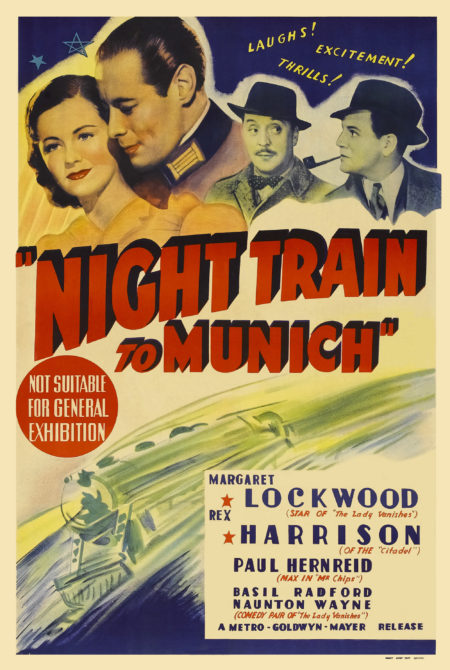
The bearded man gets off the train at the stop before Thewless’s. Humphrey and Miss Liberty are back in the car — something seems to have changed. Humphrey is rumpled, pale, yet ready for action. Thewless doesn’t know what happened; we discover that Humphrey was temporarily kidnapped and shoved into a large instrument case; and that Miss Liberty is the one who freed him. This incident has confirmed for Humphrey that evildoers are out to kidnap him, in order to get some kind of hold over his father — and in order to protect his father, whom Humphrey knows will capitulate and betray his country if necessary, he is determined to fight back.
Meanwhile, in London, Cadover has learned — it’s too tedious to explain how, here; it would perhaps be better if an audience member at Plutonium Blonde reveals this info — that the murdered man was engaged to travel to Ireland with the son of an atomic boffin. He sets out to interview London-based nuclear physicists with teenage sons, and winds up at Sir Bernard’s home. The thuggish butler admits him, and after some delay, he is ushered into Sir Bernard’s study… but the man he meets there isn’t the real Sir Bernard. The phony scientist tells Cadover that Humphrey is staying with relatives in England, and has no plans to travel to Ireland.
On the boat to Ireland, Humphrey attempts to tell Thewless what’s going on. He’s being pursued by kidnappers who want to gain control over his father; he was briefly captured, on the train. He’s carrying with him a formula of his father’s that enemy agents would love to get their hands on. But Thewless believes all of this is a product of Humphrey’s overactive imagination. In Belfast, Humphrey and Thewless board a train to Killyboffin, so does Miss Liberty — who, we learn, is staying nearby. She and Humphrey seem to have some kind of unspoken understanding. They cross the border from Northern Ireland into Ireland, and switch to a local train — which, going through a dark tunnel, is derailed.
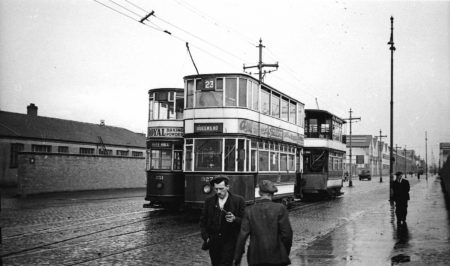
Note that Ireland is incredibly atmospheric, in Innes’s telling. Northern Ireland is grim, efficient, a police state festooned with dour Protestant warnings that seem very portentous to Thewless: “THOU FOOL THIS NIGHT / THY SOUL SHALL BE / REQUIRED OF THEE,” etc. Ireland, by contrast, is green and gay — the peasants wear brightly colored clothing. Everything is slightly chaotic, but friendly. Nothing is efficient, nothing works properly.
When their train is derailed, Thewless is knocked unconscious — and when he wakes up, he sees Miss Liberty standing over him, with her arm oddly raised… then he’s unconscious again. He wakes up inside an ambulance for children (it is decorated, inside, with nursery images; Wes Anderson, are you paying attention?), speeding down the road. He is on a stretcher, covered with a hospital blanket. He rouses the ambulance drivers, who are “surly and oddly uncertain men, who had not at all the appearance of hospital attendants.” They are gobsmacked to find Thewless in their ambulance, and abandon him on the side of the road!
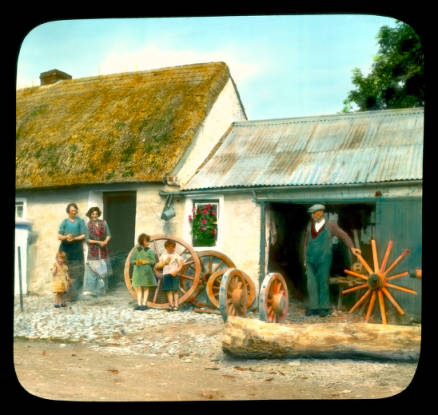
Third act:
The movie now becomes a slightly farcical thriller set in a sprawling, crumbling country estate — a Downton Abbey gone to seed.
The second half of Innes’s book is set at Killyboffin, and much of this is taken up with having fun at the expense of English people’s preconceived notions of Ireland. Killyboffin is the ancestral seat of the Bolderwoods — Ivor, and his father Cyril. Killyboffin is gloomily atmospheric. The halls are lined with ancient suits of armor, all shrouded in sheets. There are missing panes of glass, with wind moaning through the gaps. Curtains come off their rings, knobs come off their drawers, cupboard doors come off their hinges. Innes describes the effect as being like “a print after Rowlandson”; see below. There is a view of a harbor, and a lighthouse — which, at night, adds an atmospheric lighting effect to the Bolderwoods’ home, as it rotates. On the hillsides around the house, Irish peasants dye wool in bright, fantastic colors.
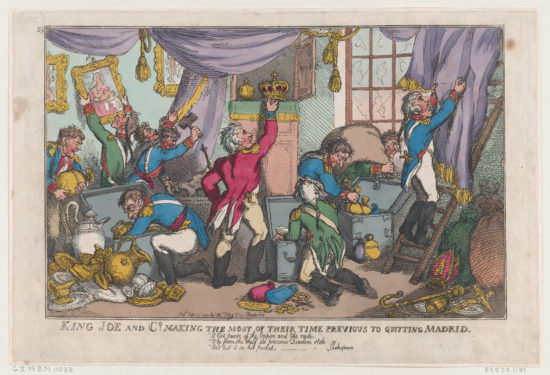
“No eggs! No eggs! Good heavens, man, what do you mean by no eggs?” This is how we’re introduced to Cyril Bolderwood. He is a retired man of affairs — having made a fortune in various parts of the world. Cyril enjoys acting the English lord on his Irish estate; he has encouraged his retinue of local servants to really act the part — they speak lyrically, poetically, like characters in a Synge play. They base their rhetoric — “And ourselves in want of a simple dish to set before a fine lad of London itself, broad and fair and blue-eyed as he is, that none of us have ever had the joy of setting eyes on,” etc. — on uncertain memories of how their own grandparents spoke; they find doing so tiresome, but it’s what Bolderwood pays them to do. He says outrageous things like, “All the Irish are intensely stupid. Charming, of course; full of poetry and often extremely industrious; religious too — positively religious to a fault.”
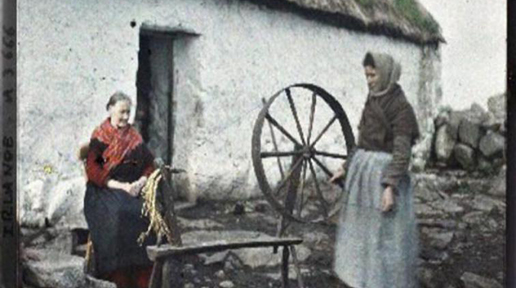
In fact, the Bolderwoods are unscrupulous villains. In amassing their fortune, in dubious ventures around the world, at some point they fell afoul of Captain Cox — when he was still in the service of his country. So when Ivor discovered — via their accomplice, Sir Bernard’s thuggish butler — that Cox (“Cox with whom he had had that uncomfortable revealing clash in Montevideo some years ago”) is to be interviewed for the tutor position, he arranges for a fake Humphrey to invite him to the movies — where another accomplice, a woman, kills him. For their purposes, they prefer that the meek, harmless Mr. Thewless should bring Humphrey to them.
What are their purposes? There are not one, but two sinister plots afoot. The mercenary Bolderwoods want to get their hands on Sir Bernard’s atomic formula — they plan to hold Humphrey captive until he sends it to them — which they will then sell to a foreign power. Meanwhile, the bearded man with the pebbly glasses, and the fake ambulance drivers, are in fact agents of a foreign power — Russia, one assumes — who don’t merely want Sir Bernard’s formula. They want to kidnap Humphrey, and use him to coerce Sir Bernard into sabotaging England’s atomic program!
But we don’t know any of this, yet. Humphrey and Thewless believe they’ve arrived at a safe haven. Humphrey knows that someone is out to kidnap him, but trusts the Bolderwoods and Miss Liberty to protect him; Thewless still isn’t sure there’s anything sinister going on.
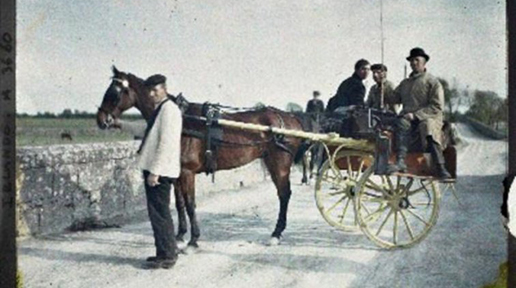
The Bolderwoods aren’t aware of the second plot. So although they’re the villains responsible for Cox’s murder, they’re surprised to hear about the train’s derailment… and relieved to hear that Humphrey wasn’t injured, but has been brought to Killyboffin along with Miss Liberty. (Humphrey had been knocked out, placed on a stretcher and covered with a sheet by the foreign agents; Miss Liberty managed to knock out Thewless and place him on the stretcher, instead. Once the sham ambulance attendants drove off with him, she commandeered a car and brought Humphrey to safety. But she doesn’t reveal this to anyone; only Humphrey knows.
When Thewless finally shows up at Killyboffin, he is relieved to discover that Humphrey is safe. He is welcomed warmly by the Bolderwoods. Miss Liberty is also there, taking a cup of tea. She makes a cryptic comment to Thewless about how beautiful the view of the bay will be the following morning at 10:00, obviously trying to arrange a meeting with him; but he doesn’t pick up on her cues. He’s still trying to persuade himself that nothing untoward has happened, on his journey.
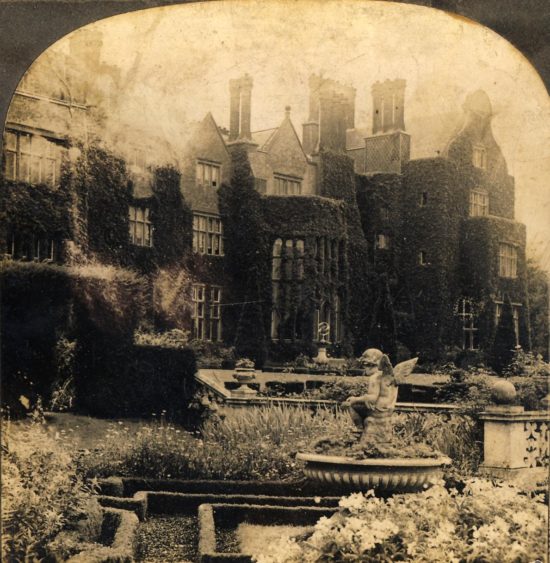
A yacht shows up in the harbor; we will later learn that the foreign agents are aboard. Ivor Bolderwood, however, has figured out that someone else is trying to kidnap Humphrey. Thewless sees him checking locks on doors and windows, studying the yacht through binoculars, and so forth; he believes that Ivor has been infected with Humphrey’s irrational paranoia. Humphrey is supposed to stay in the room next to Thewless, but at the last moment he’s moved to a room next to Ivor, in a different wing of the building.
That night, the foreign agents break into the house and look for Humphrey — in the room where he was supposed to stay. Thewless wakes up, and takes them for burglars. Although the house is creepy at night, what with all the shrouded figures in the corridors, he bravely takes a candlestick and sets out to make sure that Humphrey is OK. The wind moans; the lighthouse’s beam flickers through windows at intervals; there is an enormous stuffed dog in a hallway; etc. Thewless realizes that he’s being trailed by figures shrouded in sheets, who stop and stand still whenever he turns around. He bravely turns towards them, pursues them through the darkness, and hits one of them with his candlestick. Before he faints, he sees the face of the bearded man!
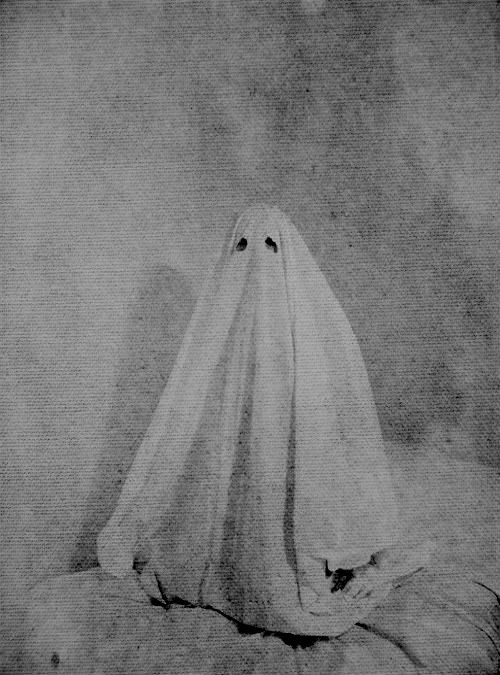
Cadover, meanwhile, continues his investigation. He deduces that the boy who accompanied the dead man to the cinema was an imposter. He finds out who sold the shotgun to Captain Cox — a blind woman! But she is able to provide Cadover with the buyer’s name. He discovers that Cyril Bolderwood is a substantial landowner at a place called Killyboffin in the west of Ireland; but he doesn’t call Bolderwood, or send a telegram — because he’s not yet sure what’s going on. [He finally discovers that the boy is Humphrey Paxton when he hear the dying confession of the blackmailer; but the whole blackmail plot seems like one twist too many, for the movie.] When Cadover returns to Sir Bernard’s home, he realizes that he’d been introduced to a false Sir Bernard; the butler slips out the back door. Cadover and the real Sir Bernard confer.
Cadover deduce that Humphrey had become aware of the kidnapping plot — but in his spirited way, he decided to face the villains, in order to protect his father. “We’ll put it simply that Humphrey has seen the chance of an adventure and has taken it.” He and Sir Bernard also discover that Humphrey has burgled Sir Bernard’s safe, and taken with him the atomic formula/plans.
Back in Killyboffin, Mhewless wakes up to discover that Humphrey has gone exploring with Ivor. Ivor leads him to a cave — a system of caves — along the shore. “It was a cave such as adventure stories own — and must have owned, indeed, from the beginnings of story-telling.”
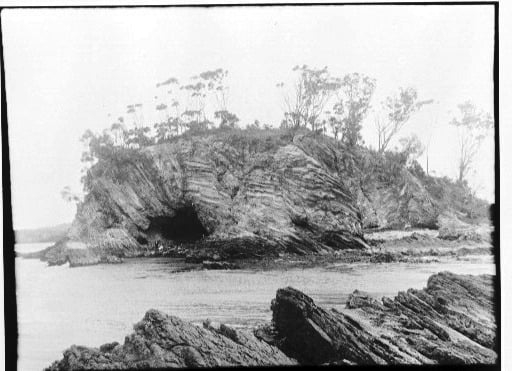
Ivor has arranged for Humphrey to be kidnapped in the cave; he will be overpowered, so that Humphrey will never suspect him of playing a role in the plot. However, the foreign agents — including the bearded man — have already arrived in the cave, and tied up Ivor’s accomplices. When they attack Ivor, Humphrey fights them — but is captured. He breaks free, and worms his way into an interior cave whose entrance is too small for adults. Someone blows a police whistle, and both sets of kidnappers take to their heels. He is safe, for the moment.
Thewless, meanwhile, discovers Humphrey’s diary and realizes that the boy has been in danger, all along. “He came because he read it all as a sort of challenge,” Thewless tells Cyril Bolderwood. “He seems to have had some idea… that he was drawing the danger away from his father.” Ivor, bloodied from his fight with the kidnappers, shows up at Killyboffin. He and his father learn from Thewless that Humphrey has carried his father’s atomic plans with him.
Humphrey makes his way out of the cave and finds Miss Liberty waiting for him. She blew the whistle; it’s the third time that she has rescued him. She reveals, in an indirect way, that her brother, Sir Charles, is the head of British Intelligence (or something along those lines); and that she is an agent of his. He’d sent her to keep an eye on Humphrey during his holiday. She now heads into the village of Killyboffin to call the police, and her brother. Humphrey returns to the Bolderwoods’ home — neither he nor Miss Liberty realize that the Bolderwoods are villains.
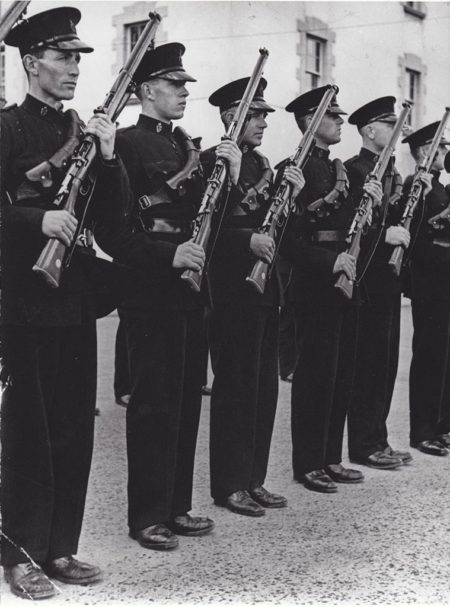
Humphrey is thrilled to find Ivor alive and well. However, at this juncture Cyril pulls a gun and threatens to kill Thewless unless Humphrey gives them the atomic plans. Thewless bravely defies them. At this point, Miss Liberty enters — with a gun. Thewless picks up a poker, and says, to Miss Liberty, in his rather pedantic way, “It appears to me that, if I were to make a resolute attempt to dash out this elder ruffian’s brains, the younger would be constrained to fire at me with his pistol, and this might give you the necessary opportunity of bringing out your own. Shall we proceed after that fashion?”
Miss Liberty informs them all that Cadover, from Scotland Yard, is flying to Killyboffin at this moment. And the Irish police are also coming. Ivor and Cyril make a run for it, and wind up stealing Cadover’s plane. The foreign agents attack the Bolderwoods’ house, which Thewless defends heroically, firing Humphrey’s shotgun and Miss Liberty’s pistol from different windows. Miss Liberty and Humphrey, meanwhile, disguise themselves as Irish peasants and slip out. As the Irish police arrive, the foreign agents attempt to flee in their yacht… but the Bolderwoods’ plane crashes into it — a fiery explosion ends the adventure.
For the movie adaptation, I’d like to leave viewers with the impression that a no-longer-diffident Thewless and Miss Liberty fall in love, at this point. Wouldn’t you?
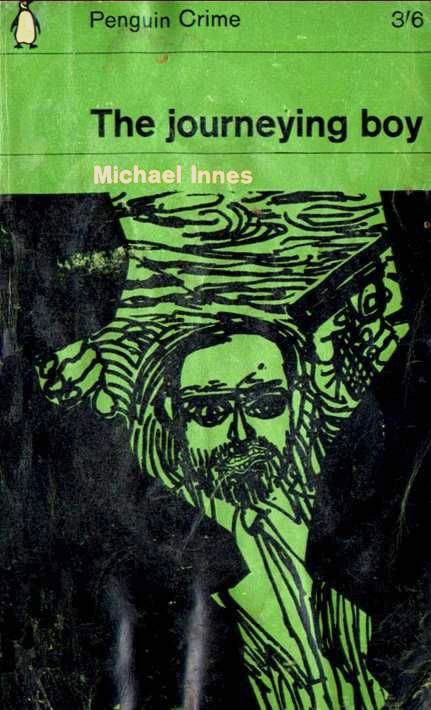
Paging Ian McKellen, Anthony Hopkins, Ben Kingsley, Dereck Jacobi, Patrick Stewart, Malcolm McDowell, Sean Connery, Michael Gambon, Ian Holm, Michael Caine, Julie Andrews, Judi Dench, Helen Mirren, Sam Neill, Christopher Plummer… the usual suspects! There’s an opportunity here to make a thrilling and funny action movie in which a young teenager and three 65+ characters are the heroes.
The locations — London, the train and boat to Ireland, rural Ireland — are atmospheric. The plot is a fun puzzle: Two sets of villains, fake Humphrey and fake Sir Bernard, two tutors, and a mysterious elderly woman who turns out to be a bad-ass heroine. It’s a coming of age story, for Humphrey; and a coming alive story, for Mr. Thewless. The atomic plans are a MacGuffin.
If I were the director, I’d cast several great character actors as members of the gang (or of both gangs) — and have one of them work in Sir Bernard’s household as butler, one in the movie theater, and one at Killyboffin as a faux-Irish servant.
Let’s do this, Hollywood!
LISTEN, HOLLYWOOD: Michael Innes’s FROM LONDON FAR | P.G. Wodehouse’s LEAVE IT TO PSMITH | Peter Dickinson’s CHANGES TRILOGY | Robert Heinlein’s GLORY ROAD | Poul Anderson’s THE HIGH CRUSADE | Edgar Rice Burroughs’s TARZAN AND THE FOREIGN LEGION | G.K. Chesterton’s THE NAPOLEON OF NOTTING HILL | Michael Innes’s THE JOURNEYING BOY | Alfred Jarry’s EXPLOITS AND OPINIONS OF DR. FAUSTROLL, PATAPHYSICIAN | André Gide’s THE VATICAN CAVES [LAFCADIO’S ADVENTURES].
Also see Josh Glenn’s SHOCKING BLOCKING series: It Happened One Night (1934) | The Man Who Knew Too Much (1934) | The Guv’nor (1935) | The 39 Steps (1935) | Young and Innocent (1937) | The Lady Vanishes (1938) | Mr. Smith Goes to Washington (1939) | The Big Sleep (1939) | The Little Princess (1939) | Gone With the Wind (1939) | His Girl Friday (1940) | The Diary of a Chambermaid (1946) | The Asphalt Jungle (1950) | The African Queen (1951) | A Bucket of Blood (1959) | Beach Party (1963) | For Those Who Think Young (1964) | Thunderball (1965) | Clambake (1967) | Bonnie and Clyde (1967) | Madigan (1968) | Wild in the Streets (1968) | Barbarella (1968) | Harold and Maude (1971) | The Mack (1973) | The Long Goodbye (1973) | Les Valseuses (1974) | Eraserhead (1976) | The Bad News Bears (1976) | Breaking Away (1979) | Rock’n’Roll High School (1979) | Escape from Alcatraz (1979) | Apocalypse Now (1979) | Caddyshack (1980) | Stripes (1981) | Blade Runner (1982) | Tender Mercies (1983) | Monty Python’s The Meaning of Life (1983) | Repo Man (1984) | Buckaroo Banzai (1984) | Raising Arizona (1987) | RoboCop (1987) | Goodfellas (1990) | Candyman (1992) | Dazed and Confused (1993) | Pulp Fiction (1994) | The Fifth Element (1997) | Nacho Libre (2006) | District 9 (2009).
JOSH GLENN’S *BEST ADVENTURES* LISTS: BEST 250 ADVENTURES OF THE 20TH CENTURY | 100 BEST OUGHTS ADVENTURES | 100 BEST RADIUM AGE (PROTO-)SCI-FI ADVENTURES | 100 BEST TEENS ADVENTURES | 100 BEST TWENTIES ADVENTURES | 100 BEST THIRTIES ADVENTURES | 75 BEST GOLDEN AGE SCI-FI ADVENTURES | 100 BEST FORTIES ADVENTURES | 100 BEST FIFTIES ADVENTURES | 100 BEST SIXTIES ADVENTURES | 75 BEST NEW WAVE SCI FI ADVENTURES | 100 BEST SEVENTIES ADVENTURES | 100 BEST EIGHTIES ADVENTURES | 75 BEST DIAMOND AGE SCI-FI ADVENTURES | 100 BEST NINETIES ADVENTURES (in progress) | 1994 | 1995 | 1996 | 1997 | 1998 | 1999 | 2000 | 2001 | 2002 | 2003 | NOTES ON 21st-CENTURY ADVENTURES.
